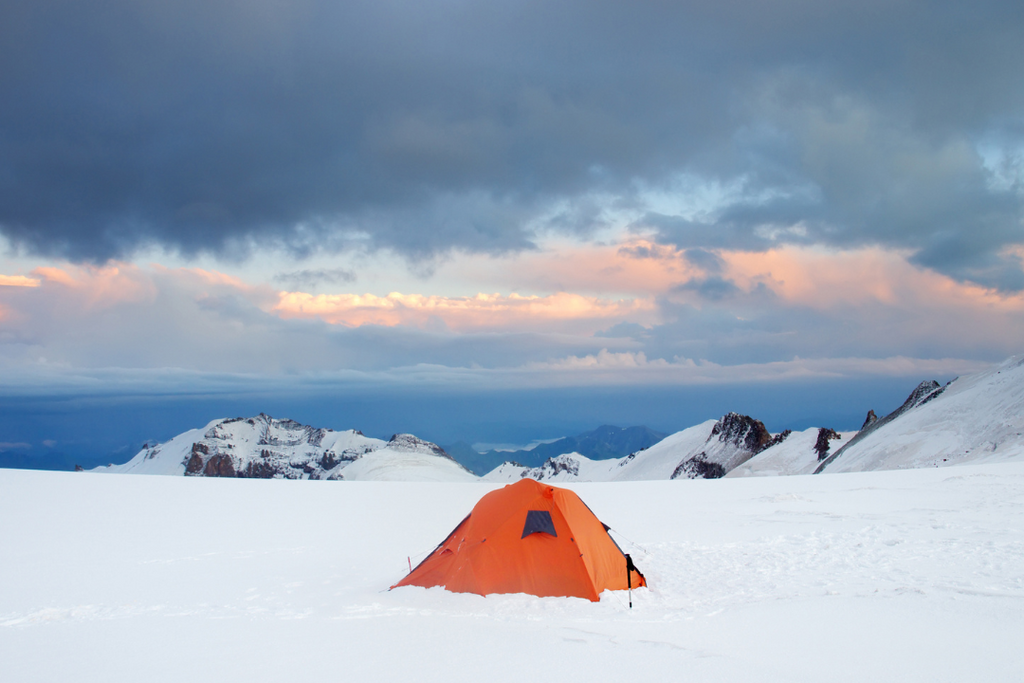Though it might not sound fun at first, winter camping can be a great time if done correctly. Camping in winter gives you a chance to explore nature in solitude, and an opportunity for recreational activities like snowshoeing, cross-country skiing, and ice fishing.
However, embarking on a cold weather camping trip means you’ll need proper gear and preparation. Here's an in-depth guide on how to camp in the winter and get it done right!
Planning
Finding an appropriate winter camping destination is crucial. Look for established sites or areas that allow winter camping, such as designated spots in national parks. Before setting out, you’ll want to diligently review weather forecasts and trail conditions to make informed decisions.
Make sure you’re in compliance with any permit requirements governing winter camping in your chosen location. Familiarize yourself with any local regulations and restrictions for cold weather camping. Additionally, consider the benefits of camping in a group for enhanced safety and a more enjoyable experience.
Essential Gear
Invest in high-quality, insulated gear tailored for winter conditions. This includes an all-seasons tent, a sleeping bag designed for low temperatures, and an insulated sleeping pad to provide a barrier against the cold ground.
You can use a layered clothing approach to regulate your body temperature. Utilize moisture-wicking base layers, insulating mid-layers, and a waterproof outer layer to stay warm and dry. Select insulated and waterproof boots, complemented by gaiters to prevent snow ingress.
If you’re planning to camp in an area with deep snow, you might want to use either snowshoes or skis to facilitate movement. Navigate the snowy terrain effectively by carrying a map and compass. While GPS devices are valuable, be aware of potential limitations of electronic equipment in extreme cold conditions.
Safety Considerations
If you’re planning to camp in a mountainous region, awareness of avalanche risks is paramount. Stay informed by checking local avalanche forecasts and avoid camping in high-risk areas.
Include emergency gear in your inventory, like a well-stocked first aid kit, an emergency shelter, and communication devices such as a satellite phone or Personal Locator Beacon (PLB). Educate yourself on cold weather injuries, recognizing symptoms and taking preventative measures.
Setting Up Camp
Carefully select a flat camping site away from potential hazards. Clear the snow to create a level platform for your tent and ensure proper ventilation to minimize condensation. Use snow anchors or deadman anchors to secure your tent, as conventional stakes may be ineffective in snowy or frozen ground.
Adhere to local regulations concerning campfires, and if allowed, be prepared to source dry wood for warmth. Portable stoves are a practical and safer alternative. A proper winter camping stove should perform reliably at low temperatures, and you should also ensure an adequate supply of fuel.
Leave No Trace
Follow Leave No Trace principles diligently, packing out all waste, including human waste. Maintain a respectful distance from wildlife, especially during winter when animals are conserving energy.
Enjoying the Experience
In conclusion, successful snow camping demands thorough preparation, adherence to safety guidelines, and a deep appreciation for the challenges posed by winter conditions. By investing in the right gear and honing essential skills, you can transform your winter camping adventure into a memorable and rewarding experience. Embrace the serene beauty of a snowy wilderness and savor the unique allure that winter camping affords.


Leave a comment: